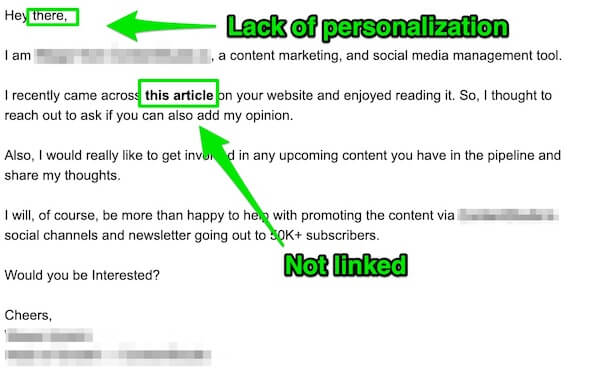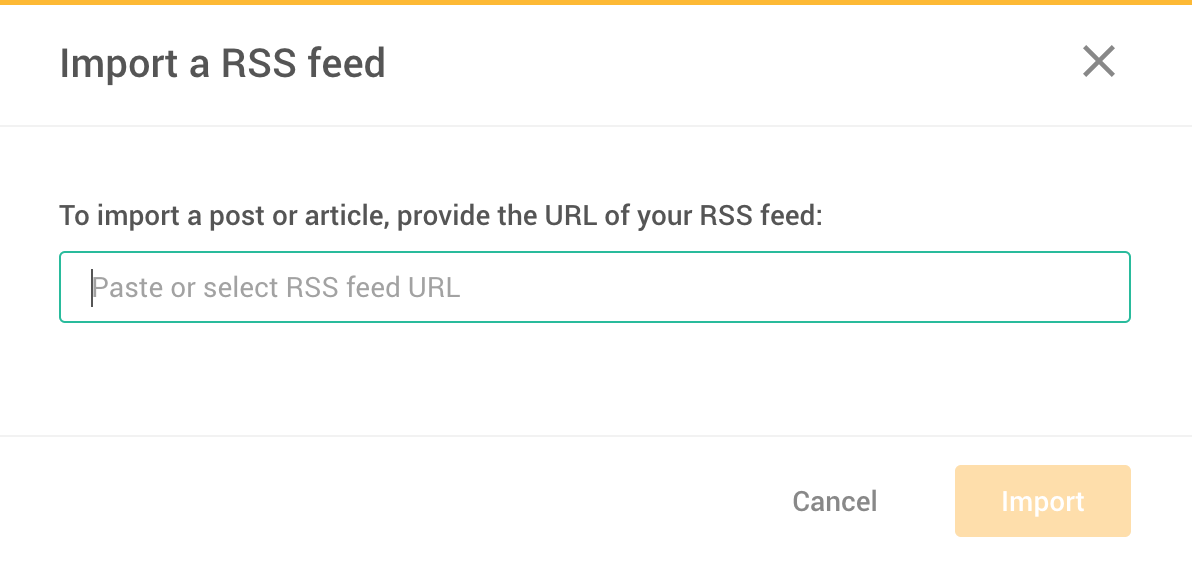
Real estate software marketing automation helps realty agents and their team manage their leads more effectively, as well as their clients and sales process. It helps them focus on the important parts of their business while automating tedious tasks like data entry, email campaigns, and reporting.
Marketing Automation for Real Estate Agents
A real estate customer relationship management system is one of many popular marketing automation tools used in the real estate industry. These systems allow for the collection of leads from websites, social media and other online channels. They are then stored in a central place. It helps you create a contact list and customize email campaigns for each of them based on specific needs.
You can use a CRM to help your real estate business by sending relevant information automatically to your contacts when you receive an inquiry or they fill out a form. This can help you save time and prevent lost leads by ensuring that you never miss an opportunity to contact your prospects or potential clients.

Automated social marketing is another way that real estate businesses automate their business. This tool lets you schedule and share content on multiple platforms including Facebook, Instagram and LinkedIn. This can help you build a bigger audience, generate more leads, and increase your income.
Real estate marketing automation software for agents should include features that are compatible with all major social media platforms. This includes a platform for content inspiration, planning, and scheduling, as well as an option to set reminders or have the software post for you.
For example, Loomly is an excellent choice for any real estate agent who wants to manage and track their social media accounts on Facebook, Instagram, and Twitter. The software offers automatic posting and various content-inspiration tools.
Loomly helps you find stock images and also offers integrations. Loomly is an indispensable tool for any agent looking to grow their social media business.

Real Estate Sales Automation
Real estate marketing automation aims to convert leads into clients. You can do this by sending out emails that give a useful overview of the home buying process to potential buyers and sellers. These emails may include tips on how to search for and compare homes as well as links and blogs with more information.
In turn, this drip campaign in real estate will be much more effective than other types of marketing. This is because these emails can be triggered when the lead is most likely to be interested in your services or your services are most likely to meet their needs.
Modifying the content of the emails is a great way to improve the effectiveness and efficiency of your drip campaign. By reviewing your drip campaign and ensuring that it includes content that addresses the specific needs for each group, you will increase engagement. This will in turn lead to a better client base and more referrals.
FAQ
What are the advantages of WordPress marketing automation?
WordPress marketing automation provides many benefits for businesses. Automation automates mundane tasks such as segmentation and data analysis, which can save you time and money. Automating repetitive tasks like data analysis and segmentation can help businesses create personalized content that will increase customer engagement, improve conversion rates, and ultimately lead to increased sales. To measure campaign effectiveness over time, marketers can also track website activity and ROI performance.
WordPress marketing automation also enables businesses to create automated lead nurturing workflows, set up powerful triggers to send emails based on specific visitor activities, and customize customer journeys with personalized messages. This allows businesses to build customer relationships and loyalty. Automation also allows for more efficient communication between teams, which can help improve collaboration and productivity.
WordPress marketing automation gives businesses the ability to keep up with their competitors by providing insights into customer behavior trends and customer behavior. This allows marketers to make informed decisions about their campaigns and quickly adjust strategies to meet changing customer needs. Businesses can also use automation to keep up with digital marketing trends such as machine learning and artificial intelligence (AI). This allows businesses to better target their audience and create more successful campaigns by leveraging these tools.
Which marketing automation software is best?
It can be challenging to find the best marketing automation solution for your business. There are so many options, it can be hard to decide which one is the best.
It must be easy to use, save time and money. It should generate leads, increase customer retention, and increase sales with minimum effort.
It must be reliable, simple to use and offer great customer support in case of problems. It needs the capacity to carry out activities such as email campaigns, segmentation of customers by interest or behavior, multi-channel nurturing of leads, insightful reporting, and intelligent analytics to understand customer behavior.
However, the most important thing is that it has the ability to give you clear visibility over customer journeys as well as generate actionable insights into what will trigger purchases from customers so you can create an effective strategy that meets their needs and wants.
If you are looking for a marketing automation tool, make sure you look at user-friendly features and data-driven progress tracking throughout the customer lifecycle. Also, consider robust personalization capabilities.
Is marketing automation the future of marketing?
Marketing automation is the use of technology and software to streamline, automate and measure marketing tasks. It helps to free up manual resources for more complex tasks like analyzing customer behavior data or creating more personalized engagement efforts. It automates mundane tasks like segmentation, testing, personalizing and tracking website visits, behavior, managing customer interactions across channels, and more.
The future of marketing automation lies in its ability to make the customer journey simpler and better understood. Marketers will be able track customers' journeys across channels by tapping into richer data sources like social media platforms and connected devices to create personalized experiences that engage with customers at every touchpoint. This will allow marketers to design highly targeted, agile strategies.
In addition to this, artificial intelligence (AI) will help marketers automate their decisions thus making campaigns even more efficient. Marketers can now focus on more important tasks, such as answering FAQs or scheduling emails.
Finally, automation will continue to grow in popularity in 2021 due to the increased acceptance of automation tools in marketing by smaller companies and advances in predictive analysis technologies that allow for insights to be generated from marketing data.
Marketing automation is an indispensable tool that can help companies succeed in today’s competitive market. Businesses can save time and money while creating personalized customer experiences with the right tools and strategies. Businesses can improve their customer satisfaction and response rates by leveraging customer segments. As technology continues to evolve, marketing automation will become increasingly important in helping businesses stay competitive and succeed in the future.
Can I automate WordPress?
Automated WordPress automates the manual tasks involved in managing WordPress websites. Automated WordPress makes it easier to keep your website up-to-date, make changes quickly, protect it from malicious attacks and track user activity.
Automated WordPress makes it possible to update content automatically on the server, without the need to make any changes to the code. It makes site maintenance easier by backing up files and restoring deleted data. Automated WordPress also offers integrated security solutions to identify potential threats to your site.
Automated WordPress tools are able to help you gather information about your visitors, such as their browsing habits and demographics. These data can be used for other purposes, such as to improve marketing strategies.
Automated WordPress increases efficiency and reduces workloads. It also makes managing a website easier. It simplifies repetitive tasks with minimal effort and can provide valuable insights into how people are interacting with your site - all leading to smarter decisions down the line.
To further streamline business operations, you can also use marketing automation tools. Businesses can automate their marketing campaigns and monitor performance in real-time with automated marketing solutions. These tools enable businesses to quickly set up campaigns, target customer segments and measure their success. These tools allow businesses to save time and ensure that the right message is reaching the right people.
How do I automate my posts?
Tired of manually posting to multiple channels? Automation is the key for saving time and energy. Automated content can be posted to a number of social networks in one click. This allows you to stay connected and not have to.
Automating posts allows you to schedule posts ahead of time so that they are always available on time. You can set the networks that the post is sent to, and automate the entire process, if you wish.
Moreover, automation lets you reach more audiences in fewer clicks by automatically cross-posting content from one platform to another. It's easy to connect all your social media accounts (e.g., Instagram, Twitter and Facebook) and schedule posts from there. Finally, you can regain control over your time and go back to what's most important - creating great contents!
How can I automate a WordPress post?
Automating a WordPress blog posting is publishing content automatically on your blog based upon a set schedule or events. You can accomplish this by setting up an RSS feed and other automation services that offer automated content. Also, you will need to establish triggers such as when the post should be published and who should get notifications when it is published. Your content will reach the right audience when it publishes automatically by having the ability to set rules.
Jetpack or Blogger Tag Editor plugins make it easier to automate a WordPress blog post. These plugins allow for better control over automated WordPress posts. Features include the ability to customise publishing dates and time, author details, category & tags, and customizing each article's publication date before it is published. You can also integrate your WordPress blog into social media platforms with plugins. That way, when you publish a new update, it will be shared to all your social networks.
Automating WordPress blogging requires careful setup. Mistakes can lead to inaccuracies in Google and other search engines, which could result both in lower ranking and customer retention. Site visitors who subscribe to email updates or receive news updates from third parties can have a better experience by ensuring that data is delivered promptly from external sources. This helps them stay in line with SEO guidelines.
Automated WordPress blogging platforms allow publishers to save time and reduce costs while still producing quality content that keeps their customers engaged. Automated blogging solutions can't guarantee success, but they can provide benefits such as increased efficiency and cost savings, as well as higher customer engagement rates when used properly.
WordPress marketing automation allows you to automate more aspects of your digital marketing. Automating tools can be used for managing email campaigns, social media posts and other online activities. You can send automated emails on a regular schedule with customized messages to each recipient. Automated social media posts can be scheduled in advance and posted at the optimal time for maximum engagement. Automated analytics can help marketers track the performance of their campaigns and make data-driven decisions. Automation also helps businesses save time by automating mundane tasks, freeing up resources for more creative activities.
Customer experiences can be personalized using marketing automation. Businesses can use automation tools to determine customers' preferences and interests. This allows them to target their audience with relevant content and offers. Automated emails can be sent out with personalized messages based on a customer's past purchases or browsing history. Automated social media posts can be tailored for specific audiences. Businesses can use automated analytics to track their campaigns' performance and make data-driven decision.
For businesses that want to simplify their digital marketing efforts, marketing automation can be a great tool. Automation tools are useful for managing email campaigns, social media posts, as well as other online activities. Automating repetitive tasks can help businesses save time and free up more resources to create. Automation can also be used by businesses to personalize customer experiences. Businesses can tailor content and offers to better resonate with their target market.
What example is there of marketing automation?
Marketing automation is technology that allows companies to automate manual marketing processes, such as answering customer emails and collecting data from websites. It also makes it possible to manage multiple digital campaigns. It can send emails automatically based on customer behavior, segment customers in different groups, and even create additional contacts when someone sign up for a mailing list. Marketing automation makes it easier to focus on what is important, which is reaching out to customers. Not only does it make it easier to manage multiple campaigns at once but also helps increase efficiency by automating repetitive tasks.
One example of marketing automation is using an automated email campaign to nurture leads. This campaign involves sending multiple emails to prospects over a set period. These emails can be customized to the individual and may include product information, case studies and discounts. Automated email campaigns allow you to track customer behavior and tailor your messages accordingly. They can help you reach more customers in a short time.
Another example of marketing automation involves social media automation. This allows you to schedule posts across multiple social media networks in order to reach a wider audience. Hootsuite, Buffer, and other automation tools can help you to manage your accounts, plan posts ahead, and track the results of your campaigns. Social media automation helps save time by allowing you to post content at the most optimal times for maximum engagement. You can also reach more people with fewer clicks.
Marketing automation can also create personalized customer experiences. HubSpot or Pardot automation tools let businesses segment customers according to their behavior and preferences. This allows you customize messages and content for each group to create a more customized experience for each customer. Automation allows you to track customer activity and engage so you can better understand their preferences and needs.
Overall, marketing automation is a powerful tool that can help businesses save time and increase efficiency. It can be used to automate manual tasks, nurture leads, manage social media accounts, and create personalized customer experiences.
Marketing automation can give businesses a competitive edge by giving them a competitive advantage. Automation can streamline processes, cut costs, and improve efficiency. Automation allows businesses to reach more customers quickly by automating repetitive tasks, cross-posting content across multiple platforms, and helping them reach more customers. Additionally, it allows businesses to create personalized customer experiences by segmenting customers into different groups and tailoring messages accordingly. Marketing automation is a powerful tool which can save businesses time and increase efficiency.
Statistics
- The highest growth for “through-channel marketing automation” platforms will reach 25% annually, with “lead-to-revenue automation” platforms at 19.4%. (marketo.com)
- Even if your database is currently filled with quality leads, how effective will your marketing automation be when you've either converted all those leads into customers or when your database begins decaying by ~22.5%/year? (hubspot.com)
- The stats speak for themselves: Marketing automation technology is expected to show a 14% compounded annual growth rate (CAGR) over the next five years. (marketo.com)
- While they're doing that, their competition is figuring out how to get more out of the 99.99% of the market that's still out there. (hubspot.com)
- Automator can probably replace 15% or more of your existing plugins. (automatorplugin.com)
External Links
How To
How do you set up and configure your content marketing automation workflows.
Automated workflows are a set of actions that can be triggered to improve efficiency and decrease workload in optimizing content marketing. This workflow simplifies multiple tasks and makes it easy to complete them all with little effort. Automation workflows are helpful for managing any size content marketing campaign, but they're especially useful when done right.
It takes careful planning and strategizing to set up an automated workflow. Once you have set the task objectives as well as the timeline, research every step needed from start to finish to complete the task successfully. Once you have decided on the task objectives and timeline, start mapping out a step-by -step process with clear milestones. Each milestone should serve to keep you informed about how far you have come with your campaign, and any updates or changes that are needed.
Once your workflow is mapped out into individual steps, it's time to configure them accordingly so that your automation process works seamlessly between each step. Your workflow configuration can include creating email marketing messages, scheduling automatic posts or tweets and automating user feedback notifications. You can also set up notifications for each milestone. You want to make sure that all settings are correct before the project goes live. This will help avoid any delays or problems later.
An effective management approach is crucial to ensure that the automation workflow runs smoothly. You must monitor progress and make adjustments depending on the results. Pay attention to customer responses and adapt accordingly. Reward good performers and keep future campaigns in mind. Be ready for unexpected changes, pivots and emergency plans if things don't go as planned. All of these activities are necessary to ensure the success of an automation workflow throughout its lifetime.